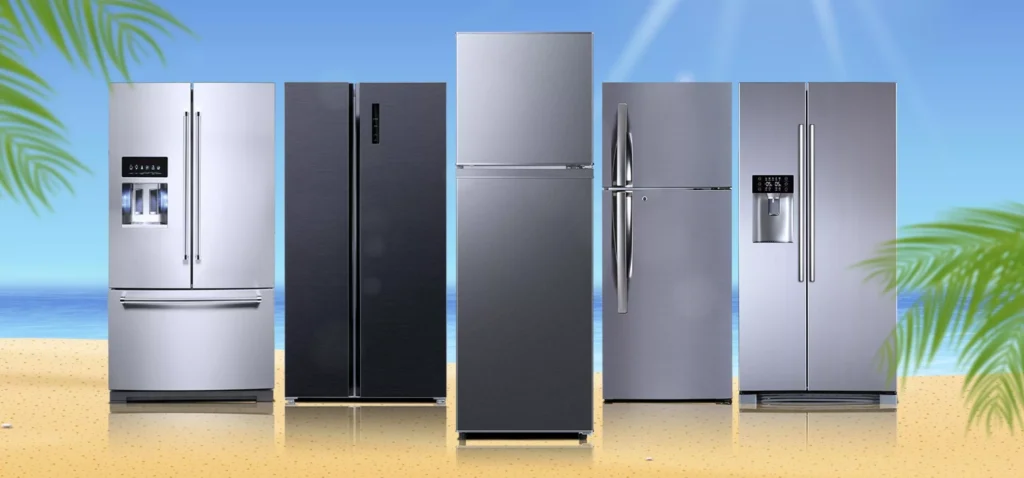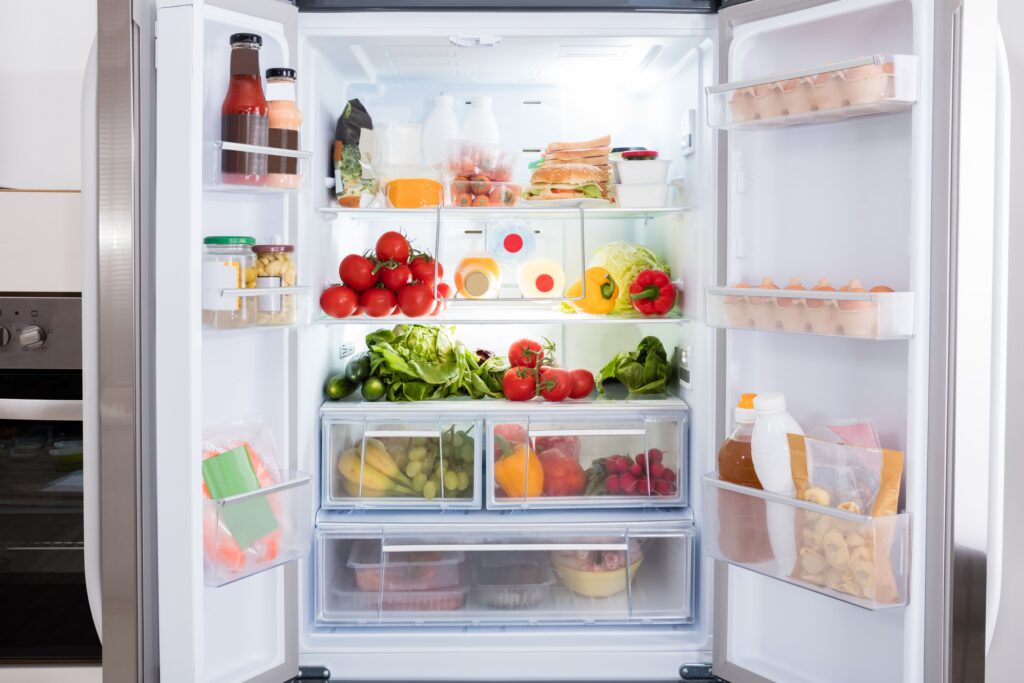Introduction
Refrigerators are essential appliances in modern households, offering a variety of features to preserve food, maintain freshness, and improve convenience. Over the years, refrigerators have evolved from basic cooling units to highly sophisticated devices, incorporating advanced technologies such as energy efficiency, smart features, and flexible storage options. Typically, between 35°F (1.7°C) and 38°F (3.3°C). It works using a refrigeration cycle that removes heat from its interior to keep items fresh for longer periods. Here’s an overview of key takeaways
Types of Refrigerators
- Top-Freezer: Classic and affordable. These refrigerators are reliable and simple, though they can be less ergonomic as the freezer section is located at the top.
- Bottom-Freezer: More convenient for accessing fresh food with the freezer section at the bottom. Ideal for those who use the fridge more frequently than the freezer.
- Side-by-Side: Provides easy access to both fridge and freezer sections, but the narrow compartments can make storage less efficient for larger items.
- French Door: Offers a blend of style and functionality with a wide fridge section at the top and a bottom freezer. These are great for families with larger storage needs.
- Compact: Ideal for small spaces like dorm rooms or offices, compact refrigerators are space-saving and energy-efficient but come with limited storage.
- Smart: High-tech refrigerators equipped with Wi-Fi connectivity, touchscreens, and integration with smart home systems. They offer advanced features like remote monitoring, food management, and voice control but come with a higher price tag.
Key Features
- Storage Flexibility: Most refrigerators offer adjustable shelves, crisper drawers, and customizable door storage to accommodate a wide range of food types.
- Energy Efficiency: With the introduction of Energy Star-rated models, modern refrigerators are designed to reduce energy consumption and lower electricity bills, which is particularly important for long-term use.
- Advanced Technology: From energy-efficient compressors to smart features, fridges today incorporate technologies that not only improve performance but also enhance user convenience (e.g., touchscreens, voice control, inventory management).
- Design and Aesthetics: Refrigerators come in a wide range of designs, from basic to high-end models, offering consumers various finishes (stainless steel, matte, black, white) to fit different kitchen aesthetics.
Common Features
- Clean the condenser coils periodically to ensure efficient operation.
- Check and replace door seals (gaskets) if they’re worn out.
- Defrost the freezer if it’s not frost-free and ice builds up.
- Maintain an optimal fill level to allow air circulation.
- Clean spills promptly to avoid odors and bacteria growth.
Maintenance Tips

Pros
- Convenience: Modern fridges, especially smart ones, enhance daily life by providing remote control, smart inventory management, and even grocery ordering.
- Food Preservation: Improved cooling technologies and specialized storage zones help keep food fresher longer, reducing waste.
- Energy Savings: Energy-efficient refrigerators reduce the long-term cost of running them and have a positive environmental impact.
- Design Versatility: Available in various sizes, finishes, and features, there’s a fridge to suit nearly every kitchen style and space.
Cons
- Cost: Smart fridges and high-end models can be significantly more expensive than basic refrigerators, with added costs for maintenance and software updates.
- Complexity: The advanced features of smart refrigerators may overwhelm users who prefer simplicity or are not tech-savvy.
- Space Constraints: Larger models, such as French door or side-by-side, may not fit into smaller kitchens. Also, narrow fridge sections in some models may limit storage space for bulky items.
- Potential Tech Issues: Smart refrigerators, though convenient, can suffer from software bugs, connectivity issues, or other tech problems, which can be frustrating and expensive to fix.

Conclusion
Choosing the right refrigerator depends largely on individual needs, kitchen size, and budget. Traditional models (top-freezer, bottom-freezer, and side-by-side) are still excellent choices for many consumers due to their reliability and affordability. However, smart refrigerators represent the future, offering advanced features that appeal to those who value convenience and high-tech innovation, though they come at a premium price.
If you’re looking for simplicity and affordability, top-freezer or bottom-freezer models might be the way to go. For larger families or those with bigger kitchens, French door or side-by-side models provide more space and advanced features. If you’re in a smaller living space or need a secondary fridge, compact models are a perfect choice. Ultimately, the right fridge for you will balance cost, size, features, and convenience based on your unique needs
Recent Post
Shop These Products Online
Discover the best selections available online click, compare, and shop with confidence through our trusted affiliate links!
